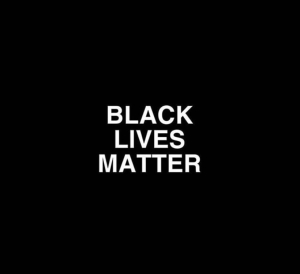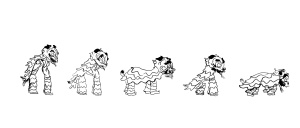Re-thinking Media Representations of Asian Masculinities in Sport – An Interview with Dr Michelle Ho and Dr Wesley Lim
Interview by Dr Indigo Willing

There are advantages to move away from Western theories of masculinity and Western knowledge production, especially when scholars are working on non-Western contexts.
Since 2020, Dr Michelle Ho (NUS) and Dr. Wesley Lim (Australian National University) have been collaborating on the project, “Asian Masculinities in Figure Skating.” The project explores Asian masculinities in the performances and media representations of elite male figure skaters, including Nathan Chen and Yuzuru Hanyu. Their published work on this topic includes in Dance Research (2023) and Media, Culture and Society (2023).
Their work creates a vital fresh vantage point and angle of inquiry and reflection as typically, Asian Australian diasporas devote considerable attention and pride towards Asian authors, actors, film directors, academics, performing artists, culinary professionals, politicians, doctors, scientists, and entrepreneurs yet rarely embrace sporting figures. Asian men are often overlooked and under-represented in the media, community events and related awards and speaking engagements. Part of this neglect may be due to the traditional exclusion they have had in the (White) public imagination of traditional sports that are mythologized such as hyper-masculine, such as football. In Western, colonial-settler societies, Asian men are also often represented in quite narrow ways that also reflect stereotypes in mainstream Hollywood films since the 1980s. That is, not particularly athletic nor sexualised (through a heteronormative lens) as conventionally desirable.
There are exceptions that include actors like Christoph Pang and skateboarders such as Christian Hosoi. Jeremy Lin has also drawn positive attention in basketball. Olympic sports also appear to offer some room for Asian men to receive recognition and to break stereotypes. Moreover, in the world of figure skating, Asian men are achieving gold medals and world class results. And, while countries like China and Japan are strong Olympic contenders, even the Philippines, which lacks many facilities, have a representative in Michael Christian Martinez with hopes for Paris 2024.
In this interview, Dr Ho and Dr Lim were invited to discuss what were some of the key themes on Asian masculinity in this sport they were able to identity and what types of insight do they feel are transferrable to other sports and contexts?
AAFFN:
What led you both to look at the traditionally White athlete dominated sport of figure skating to explore Asian sporting masculinities rather than say, basketball or other sports read as hypermasculine?
Wesley: My reasons stem from personal interest as an Asian-American. I began figure skating as an 11 year old in Texas and religiously watched skating championships on television since 1992. After I finished my Ph.D. in German Studies in 2012, I realized that the cultural studies, dance and performance theories and approaches I used in my research could also apply well to figure skating, which I had never written about at the time. I actually first became familiar with Michelle through her article on Midori Ito and Mao Asada.
Michelle: I have done work on Japanese athletes like Midori Ito, Mao Asada, and Naomi Osaka. A couple years later, Wesley received a grant to do research in Singapore and just wrote to me to see if I wanted to meet up. We ended up realizing that his expertise in dance and performance studies could combine well with mine in critical race, gender, sexuality and sports studies. And coincidentally, Nathan Chan and Yuzuru Hanyu were performing the most technically astounding quads with sophisticated artistry. We thought that this must be a new trend in Asian masculinity and wanted to see where we would go with it. We started to co-write the two articles you mentioned, which began as an experiment that is now making its way into our book project.
AAFFN:
Your article describes Asian sporting masculinities as “alternative constructions of masculinities that complicate monolithic understandings of masculinity in or congruous with the West…[and] as a capacious term for diverse masculinities departing from Western models of sporting masculinities and are located in specific Asian contexts” (Ho and Lim, 2023). What are some of the key differences between diasporic Western constructions of men figure skaters and ones in Asian nations like Japan?
Ho and Lim:
Since figure skating has historically been such a White sport, both diasporic Asian skaters growing up in the West (like the US or Canada) and Asian skaters from Japan or China often skated to Western music and choreography (predominantly ballet and other forms of dance). The judges, a majority of whom come from Western countries, prefer to see skating to Western themes. One key difference now is that Asian skaters feel more compelled to express themselves more as individuals. Instead of necessarily being dictated by Western music and choreography, they instill the help of other Asian influences. The boom in skating shows and commercial appeal that happened in the West in the late 90s and early 2000s, has now moved to Asia. This positive trend is also related to what some scholars (e.g. Lee and Tan 2019) have called the “Asian turn” in sport, in which not only is there more emphasis on sport in Asian nations, but also an increase in fandom and the sport industry. We feel the Asian turn helps to shape how male figure skaters are starting to embrace their Asian difference in a historically White sport.
AAFFN:
What advantages are there for sport scholars (and Asian Australian researchers) to perhaps move away from anchoring studies to Connell’s hegemonic masculinity and shifting attention towards the idea of ‘inclusive masculinity’ (Anderson quoted in Ho and Lim, 2023)?
Ho and Lim:
There are advantages to move away from Western theories of masculinity and Western knowledge production, especially when scholars are working on non-Western contexts. Numerous scholars including Kam Louie have discussed why this move is important, especially so that we don’t treat Asian subjects as objects to apply Western theory to. We wouldn’t recommend shifting to “inclusive masculinity” necessarily because it is a similar issue of applying Western theory to Asian subjects. Of course, we realize it is nearly impossible to publish any kind of scholarship in the English language without citing Western theories and certainly we are expected to cite Connell’s hegemonic masculinity in all our work on Asian masculinities. We are merely highlighting these EuroAmerican-centric expectations.
These two stereotypes are from a Western view. In Asia these would not exist. We think around the early 2000s until the mid-2010s, many diasporic Asian and Asian skaters still felt the need to perform forms of white, hegemonic masculinity: the distinguished gentleman (harking back to the 18th-century, European upper class white male), rock and roll (Elvis-style program), prehistoric warrior; these are just a few.
AAFFN:
Your study critiques the stereotype of Asian masculinities being positioned as both “passive, feminized and emasculated’ and, ‘sexual threats to white women’”. In what ways have these stereotypes been perpetuated or challenged by figure skating that allows and gives space for inclusive masculinity?
Ho and Lim:
These two stereotypes are from a Western view. In Asia these would not exist. We think around the early 2000s until the mid-2010s, many diasporic Asian and Asian skaters still felt the need to perform forms of white, hegemonic masculinity: the distinguished gentleman (harking back to the 18th-century, European upper class white male), rock and roll (Elvis-style program), prehistoric warrior; these are just a few. When the US American skater Johnny Weir began skating in the early 2000s, this lithe body and frilly outfits (drawing strongly from Russian skating costuming influences) and androgynous appearance very much celebrated and queered the male skating body. He was also vocal and outspoken on many topics, but nonetheless, created a strong personality off the ice: giving legitimacy to more individuality. As such, many male skaters began skating in a less hegemonically masculine way. We believe his work has allowed the return to artistic skating and for Asian and diasporic Asian skaters to perform in a more inclusive ethos.
Scholars seemed genuinely interested in our focus and understood why it was important to look at Asian masculinity in sport. What caught us by surprise perhaps was the reception from fans of certain figures like Yuzuru Hanyu for instance. Unexpectedly these fans became readers of our work and we found ourselves wanting to do more to write about him in academic scholarship.
AAFFN:
How can journalists and writers in the Western context like ‘Australia’ be more aware of and avoid gender stereotypes in sport that affect Asian men?
Ho and Lim:
There needs to be coverage of more Asian athletes and their stories (through interviews and reportage) to individualize them beyond stereotypes. In many ways, coverage on elite athletes does tend to favor those who are at the top and only those in certain sports. In Australia, figure skating does not get picked up much in the media as much as swimming, rugby and cricket, possibly because of the lack of Australian skating stars. Media coverage could also include amateur athletes as well. And importantly, the voices of Asian journalists and writers (not just White ones) need to also be heard.
AAFFN:
You have presented this work internationally and in Australia. How has the feedback for your papers been in terms of people being open to studies of Asian men in sport? What’s a good takeaway that you remember?
Ho and Lim:
We would describe the reception so far as positive overall. As in, scholars seemed genuinely interested in our focus and understood why it was important to look at Asian masculinity in sport. What caught us by surprise perhaps was the reception from fans of certain figures like Yuzuru Hanyu for instance. Unexpectedly these fans became readers of our work and we found ourselves wanting to do more to write about him in academic scholarship.
Michelle remembers one time after presenting at a large international conference how an established gender and sports scholar (who didn’t work on the Asian context) was enormously excited to hear about this project and wanted her to send them a copy of their publication when it was out. It was likely this scholar wanted to cite or teach on this subject, which we found a very encouraging sign to our work.
AAFFN:
What are some books or theorists who have been important to your own work on Asian sporting masculinities?
Ho and Lim:
Mary Louise Adam (began important research on masculinity in figure skating)
Kam Louie (central to starting a discourse on Asian masculinities)
Kuan-Hsing Chen (while he did not discuss masculinities per se, his notion of “Asia as method” was helpful for doing inter-Asia referencing)
Garry Whannel (we found his work on media representations of men and sport, albeit in the U.S. context, helpful for thinking about Asian figure skaters in the media)
AAFFN:
Are there any films and documentaries that have addressed some of the themes in your research that you would recommend?
Ho and Lim:
We cannot think of any so far, which is wild, and perhaps this reflects how Asian men in sport are either absent or depicted as hegemonic masculine (think Kungfu or martial art movies).
There is one documentary on Takahashi’s life, and Chen recently had his biography come out, but we’re thinking that’s not what you meant, right?
AAFFN:
Where to next? How can people interested and studying Asian men in sport follow you and your future work?
Ho and Lim:
Twitter – @WesleyGrafWald @michellehsho
https://researchers.anu.edu.au/researchers/lim-w
michellehsho.com
Our work is usually uploaded on Academic.edu and ResearchGate. This means readers can download them as PDFs for free. See the following:
https://anu-au.academia.edu/WesleyLim
https://www.researchgate.net/profile/Michelle-Ho-22
We are also always happy to be contacted for our work.
References:
Lim, Wesley and Michelle H. S. Ho. 2023. “Hyperathletic Artistry: Nathan Chen and Yuzuru Hanyu Performing Asian Masculinities.” Dance Research 41(1): 1-18.
Ho, Michelle H. S. and Wesley Lim. 2023. “Asian Sporting Masculinities in Figure Skating: Media Representations of Nathan Chen and Yuzuru Hanyu as Rivals.” Media, Culture & Society 45(3): 561-577.
Lee, Jung woo and Tien-Chin Tan. 2019. “The rise of sport in the Asia-Pacific region and a social scientific journey through Asian-Pacific sport.” Sport in Society 22(8): 1319-1321.
Interviewer: Dr Indigo Willing
Twitter @indigowilling
Post-Hollywood Narratives of ‘Nam’: Meet Dominic Golding – Vietnamese Refugee, Adoptee, Theatre and Film Creative and Disability Rights Advocate
AAFFN Story on Dominic Golding
By Dr Indigo Willing
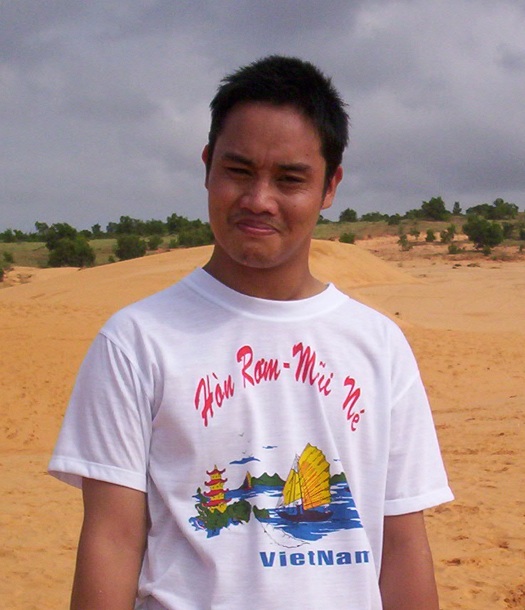
Policy can’t be informed just from those in government, it is critical to include people from diverse backgrounds.
Brief bio:
Dominic Golding’s roles include being a project and policy officer for the Disability Royal Commission in the National Ethnic Disability Alliance (NEDA), and he has over 20 years’ experience in the Community Cultural Development and CALD sector as an arts worker. This includes building up and delivering new creative social projects that are innovative and driven by culturally diverse communities. He has a Master of Arts in Visual Arts and Performance Studies from Monash University and completed a Master of Social Work from RMIT. He is also a former Disability and Community Arts officer with RISE (a refugee focused organisation), was part of the advisory group for the Asian Australian Democracy Caucus and has been involved in numerous intercountry and Vietnamese adoptee group initiatives. He is originally from Vietnam and migrating to Australia as a baby in 1975.
What are some of your activities and roles lately?
I currently do systematic advocacy for a disability peak body in Canberra. I advocate to the government on various disability policies at a federal level and often it is the National Disability Insurance Scheme (NDIS) or the Disability Royal Commission (DRC). In this position, I look at the different policies that governments are developing and advise them on CALD issues that need to be considered when it comes to the rights and barriers. The model I work with is really directed at bringing the voices of people with disabilities so that they can collectively confirm what’s needed from lived experiences. Policy can’t be informed just from those in government, it is critical to include people from diverse backgrounds.
You have a strong history in theatre and the arts too. How do you combine that with your other work and roles?
I am working with Diversity Arts Australia, which is very much a side job I’m proud to be involved in and talk about. I’m working with a galleries organization, and local arts companies in regional Victoria to help them to develop their arts and equity policies. So, things like how would you bring about justice through managing an arts institution? I also get to review the programming to make it much more equitable, so not equality, but equitable.
What would be a definition between equity and equality that applies to your work?
It can vary of course. For me, in a nutshell, equality covers things more generally, and it can simply mean fairness and kindness. It is also about the degree of respect that you encounter, but the problem is that it treats everyone the same. It’s not really making any concessions for different needs or experiences, so you’re not really making improvements or building systems to understand difference. On the other hand, equity is about dealing with difference. It is concerned about justice but goes further to tailor and be more precise about what is needed to lift people up rather than just having a one door and one style of policy and hoping for the best.
How does society fail to respond to issues of accessibility and disability?
The public media and charities get their hearts out when seeing children with disabilities in hospital, but when we grow into adults that doesn’t fit the image that non-disabled people gravitate to, unless it is the Paralympics or we are framed as inspirational.
I do not see myself as a disabled person in many ways, because I’m only disabled by certain things that I can’t do. I want things to be a lot more nuanced around disability. There is a lot of people with physical disabilities, a lot of people with intellectual disabilities and a lot of people who are neurodiverse. To me, we are all individuals with additional social markers that intersect. There are also people with under-recognised skills, yet we have systems that can create barriers for them.
The World Health Organization classification has framed its approach to disability more wholistically, by saying it is more than just a medical problem; it is also a social problem, and an environmental problem. This is why I do advocacy. It is a more holistic way to address needs and exclusions. I would add culture in there as well. I am not part of the Deaf community culturally. I can hear with degrees of disability. And I came over in the Vietnam War as someone with cerebral palsy. People focus a lot on children and kids but not adults. The public media and charities get their hearts out when seeing children with disabilities in hospital, but when we grow into adults that doesn’t fit the image that non-disabled people gravitate to, unless it is the Paralympics or we are framed as inspirational.
Does this somehow reflect other adoptee experiences of being treated differently too? Can you share a bit about your migration in 1975?
When I was a baby, I was put on twos planes out of Sai Gon in what the government called Operation Babylift, in the final month of the war. I stayed in Melbourne under state care for a good couple of months until I got adopted and picked up by a new, White Australian family who ended up taking me to Mount Gambia in South Australia.
I think growing up on a farm there was good. I enjoyed just being there, being with my adoptive family and a couple of animals in the countryside. It was not until I joined the school education system that things went from calm to hearing people talking negatively and that kind of crap.
In hindsight, is there anything that people can learn or take from that sort of adversity? Whether they are adopted, migrants or anyone marginalized in general?
Like what cannot kill you makes you stronger? I learned self-worth, self-actualization and as a kid, a kind of everyone else can get out of the way mentality and that you cannot rely on anybody else. Do not get me wrong. I am not bitter. And I know you can find good friends and good allies, but genuine and good friends and allies are the ones who put in the real effort to support you and see difference as a good thing.
I did grow up with a pull yourself up by your bootstraps attitude around me. You know, a typical country way of working things out for yourself but also less pressure. You could take time to do things as you want to do them. It may have not gone always to plan but that is a learning experience too.
As an adult who has travelled more and lived in big cities and in Sai Gon for a year, you start to see the excuses people say to justify their discrimination.

I met you when you were directing theatre, writing screen plays and acting. Your work covers Vietnam War themes, adoption and about disability. What drove you to start representing these stories?
Growing up, you’re not going to be the standard Hollywood archetype. There wasn’t much to see and when there was, it was bad. And that just got to be a way for me to challenge that on the stage and in video media. You know, I felt hey, a person with disabilities can do this as well, I’m not going to be in a tight T shirt flexing like Hugh Jackman (laughs). But I use my training in the arts and theatre development to make content and improve the visualization of us on the screen. My challenge was how to shake things up, including improving things like the terms of how we describe things, and just creating something that is entertaining while also informing.
In terms of taking power, with a focus on culture and ethnicity, one of the things I’m involved with is with a CALD disability collective in Melbourne led by a woman with disabilities herself. She’s Vietnamese/Chinese. It is a small group of people and we work with filmmakers of colour. They got funding to by the Department of Health to create and put out a media videos to educate for people with disability about how to do respond to COVID and how to look after yourself post COVID.
( https://www.youtube.com/@voskita2174/videos ).
Having that representation makes a difference. On that note, I want to talk about the Vietnam War films you might have seen and what sort of Vietnam films would you make today?
I saw all the usual films. The Deer Hunter. Apocalypse Now. That kind of thing. I did seek out more of the literature on the Vietnam War. It was hard to grow up and to only see one side (the Americans) as this great power and as the good guys, while Vietnamese were portrayed as just evil. Come on, the Vietnam War was complicated. It was a mess just like the warfare in Korea was too. And the West is still technically at war with North Korea. The way Americans were documented only showed what was the most significant aspects of the American enterprise. This included the world of adoption and rescue. The warfare that was intertwined in the lives of Vietnamese was mostly ignored or obscured in many cases.
Very narrow versions of the Vietnam War through Hollywood films became the only visualization or information that I could receive during the 80s. So, I’ve tried to get better or more balanced stories from bookstores about the Vietnamese on the Vietnam War. But it’s not going to happen. We’re still always going to be seen from a Western perspective as a problem as the west is still grappling with this concept of America as number one. I think of Western democracy and how the authors and experts in warfare think about “how we went wrong?” Yet, it is easier to be deal with battles and heroic acts against an unnamed and dehumanized enemy than with someone seen as a real human.
What kinds of images of Vietnamese women did you see in Vietnam War movies that Hollywood made?
Don’t get me wrong, the films are well made. The acting is great. I have seen Apocalypse Now, Full Metal Jacket, a lot. But I grew up with a kind of love hate relationship to the Hollywood version of the Vietnam War, at least through the western male gaze.
Too many Vietnamese women are represented in a way that relied on stereotypes, like being ‘prostitutes’ and submissive and are raped or rescued by Americans. They were usually only shown as White American GIs. While the Vietnamese women characters are just so submissive, subdued, voiceless, and sexually available.
And the way Black American males in Vietnam War films are shown is just as bad, as mostly white directors using Black voices to comment on race. To date, from my understanding, there is only Five Bloods by Spike Lee that unpacks the African American GI experience.
Whereas the Vietnamese men are a threat, to kill you or turn on you at any time. There’s low effort to show them as human or allies. Even in Good Morning Vietnam which is mean to be more sympathetic and a comedy, and The Killing Fields that is a drama.
Don’t get me wrong, the films are well made. The acting is great. I have seen Apocalypse Now, Full Metal Jacket, a lot. But I grew up with a kind of love hate relationship to the Hollywood version of the Vietnam War, at least through the western male gaze.
One that does change things a bit more is Heaven and Earth by Oliver Stone with actor’s Hiep Thi Li, Joan Chen and Tommy Lee Jones that is based on the story of a Vietnamese woman, Ly Le Hayslip. It shows things through her perspective a lot more, and as a war migrant. The GI isn’t the perfect war hero and they both have a hard time back in America.
What kind of film would you make about the Vietnam War?
To be honest with you, if I had, you know, $4.5 million dollars to make a film in Vietnam it would be about Vietnamese food and its centrality to culture and connecting and war. By telling a wider story about family, and class and dealing with how to improve and deal with all sorts of internal and external pressures in life and society in times of war. Like for me, it would cover the ‘small’ costs of warfare, and why local politics has just a strong impact on citizens/soldiers as does acts of extreme violence. This is at the heart of all I lost and that is not in a typical Vietnam War film. For me, I would tell a story that included warfare, violence and adoption, and disabilities, and how all these things go hand in hand.
I also think as adoptees we just need more representation as people with complex lives, needs and backgrounds. Who grow up and do things that no one ever expected us to do. And we can do a lot more if we have more spaces and support. That is at the heart of stories about being Vietnamese that we need to share.
Review of ‘Hey Siri, Unf*ck My Life’ performed by Dilsah
‘Hey Siri, Unf*ck My Life’ performed by Dilsah
Review by Dr Indigo Willing
Artist: @dilsah_2.0
Agitate Program @circusvulcana
Mentoring @leahsheltonlive @celiewheels
Photo credits @jadeellisphotography

Photo caption: Dilsah performing on stage reading spoken word/rap to music.
Hey Siri, unfuck my life by Dilsah de Rham (they/them) is their first autobiographic written drag/drama performance about their life experience of living in the space in between. They are a Meanjin, Brisbane based artist with their roots in Sri Lanka, Switzerland and France. The show is described by them as an exploration of “living in a society where we do not fit into boxes, and it is sometimes traumatising, until we find the space where peace prevails.”
Dilsah’s solo stage performance is a freshly honest, originally structured, visceral, and hauntingly memorable exploration of transnational and transracial adoption. That is, when a child is adopted by parents from another nation and are racialized as different to them. Yet this show is so much more, with the performer refusing to be boxed into genres and singular framings of who they are and all they inhabit. This includes us also gaining a window into how flawed the gender binary is (conventionally split into just men and women) from an up-close discussion of what it can be like to be non-binary and gender diverse and face further external misrecognition on top of being adopted.
Being a transnational and transracial adoptee myself, it can be an emotional roller coaster viewing works based on adoption stories. Many adoptee films, plays, and documentaries are understandably draped in the heaviness of family identity, sometimes rejection (by adoptive and/or birth family), longing, and mishap. This is especially true of documentaries depicting adoptees searching for who they are in ‘foreign’ lands (of their birth) while facing endless culture clashes in the search for surviving biological relatives. But we also face challenges in the receiving nation of children, that is, the countries where we were adopted.
In response to someone recently telling another adoptee on social media in a comment that they will never belong, Dilsah shares that, “this is an example of the space in between hardship…when people keep reminding us that we don’t belong here when it’s the only place we know right? And our adopted parents (mine) won’t understand and validate us (eg. colour blind ideology) so we feel isolated when I did not have fb group adoptee connection and I was a child!”
Of their show, Dilsah explains:
“The space in between is represented physically by the drag and the 2 chairs. The space in between is about this uncomfortable place experienced by transracial adoptees, where for example, we don’t feel heard (like by Siri voice representing this society) or loved for who we are and not who we represent in the world (rejecting the colour blind ideology), and not belonging anywhere (neither fully our adopted country or birth) as an adopted and yet it can be feelings anyone can relate with their story. The other voices: both negative and our inner wisdom. All the voices are voices that anyone can relate to in their lives. Siri equals the cold society, the negative voice (our inner critic /ego) and the more positive voice (our own wisdom ).”
Hey Siri, unfuck my life is a much-needed step into letting audiences see something different about the adoptee experience, through a bold but gentle invitation to let us watch on with Dilsah sharing intimate pleas and thoughts with their smartphone. The audience can hear the voice of Siri, who is witty, and sometimes sweetly responsive and humorous yet also tells harsh truths with the kind of naivety and factual delivery that can only be expected of an AI-generated program. This technique is effective and touching, as we are transported to a familiar practice, we do every day ourselves.
Dilsah should be commended for presenting their exploration of who they are in a way that is both contemporary and creative. The show itself is part traditional theatre/part spoken word, with a rap-infused part of the show with catchy beats and costumes that also pushes stereotypes around gender norms. This show goes far in debunking neat and linear adoption narratives of going from ‘rags to riches’ with a seamless happy ending (often integral ‘white saviour’ narratives of transnational and transracial adoption that still linger from the 20th Century). In this vital re-framing and anti-colonial route, we are taken on a journey through some old-age questions of identity and belonging. At the same time, we are also let in and given an occasion to reflect on contemporary questions about love in the online, smartphone era where we are led to believe we can just ‘click and connect’ yet are often left feeling even more alone and longing to be chosen for love, or even just simply desired, or accepted.
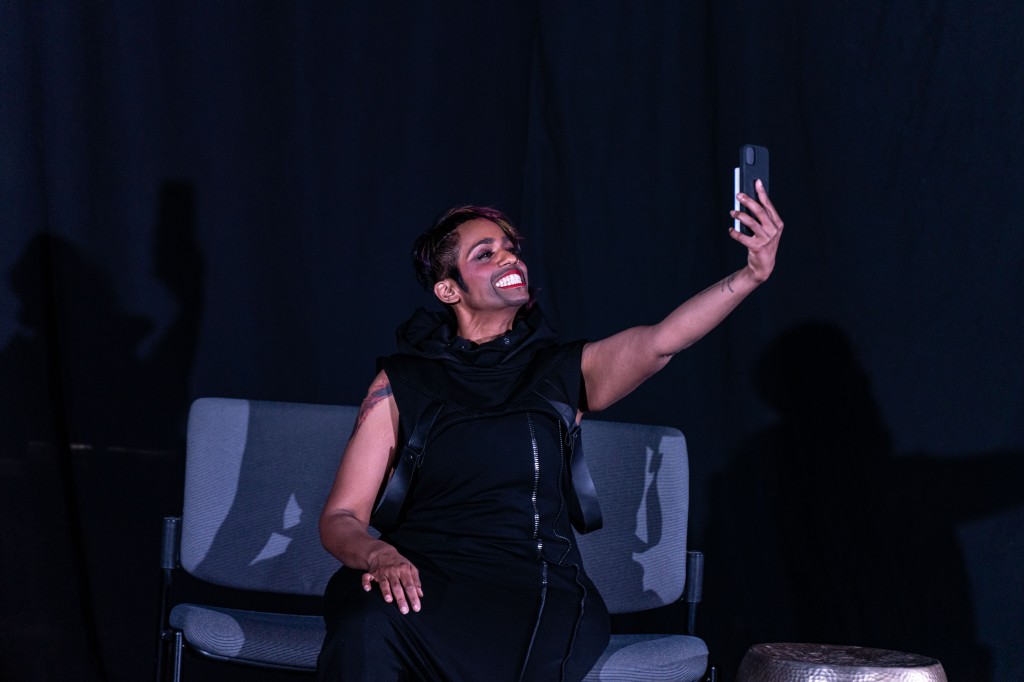
Photo caption: Dilsah is on a dark stage in black outfit, sitting on a chair looking into their smartphone smiling
We are also invited into an occasion to all reflect on their/our universal struggle to attain (and contain) self-love while bombarded with unrealistic and narrow definitions of what life experiences we should have. Everyone ends up knowing rejection or feels lonely or a misfit at times. Yet with social media we have never been under so much pressure to be popular and have ‘perfect’ lives. Hey Siri, unfuck my life brings enlightenment that can lead to a better acceptance of who we all are within the chaos of the modern and that it’s OK to defy conventional expectations.

About the show:
The show was part of AGITATE, produced and presented at Vulcana Circus which is something of a Brisbane cultural institution for women and non-binary artists in the fields of circus, dance and other areas of the performing arts. The atmosphere is carnivalesque and playful, yet also has a seriously dedicated environment to embracing and promoting inclusion including accessible space for wheelchairs, announcements for audience members with special sensory considerations, and gender-neutral bathrooms. AGITATE is an incubator program that is free for artists to join and get to work with the internationally renowned artist, Leah Shelton, an award winner for her show BATSHIT. Celia White, Artistic Director of Vulcana Circus, was also on board. Both Shelton and White are there to support their artists in every aspect of the production. Look out for upcoming dates and Dilsah’s refreshed performance of their show.
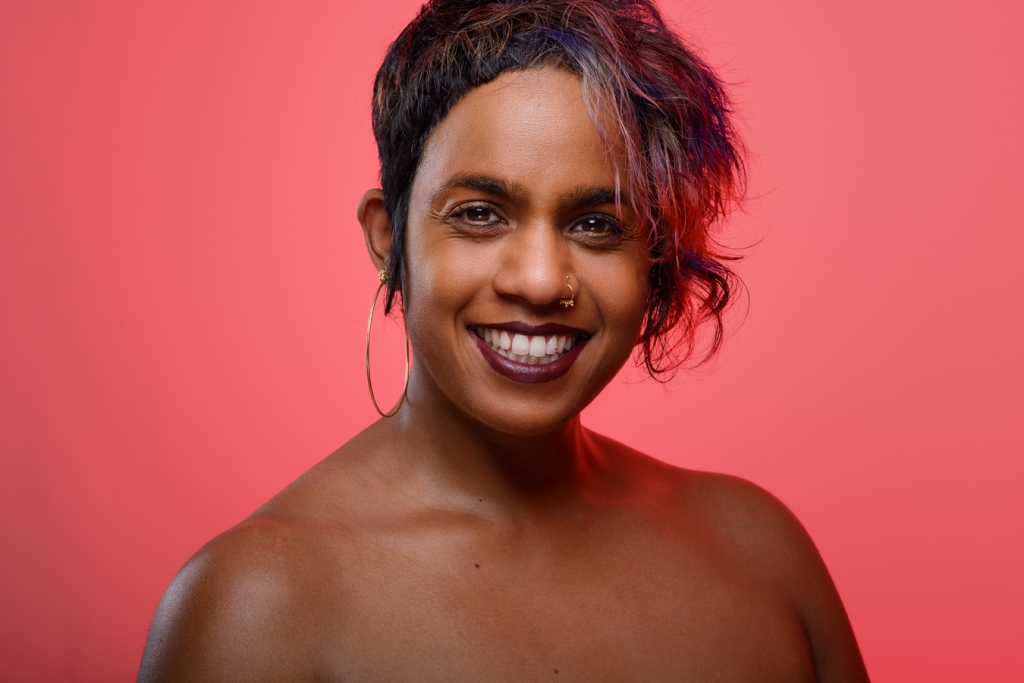
About the artist:
Dilsah has a background in Theatre and Visual Art. They recently graduated from Griffith University with a Master of Social Work. Dilsah is also developing a decolonial framework to address mental health as a counselor and community worker. As an activist, they have participated in an array of projects to dismantle taboos such as violence towards women and non-binary individuals to challenge societal gender norms. They are also a survivor of child trafficking and domestic abuse. At present, they are actively working in various community organizations for minority groups as well as writing their first show.
Film Review: Echo 8
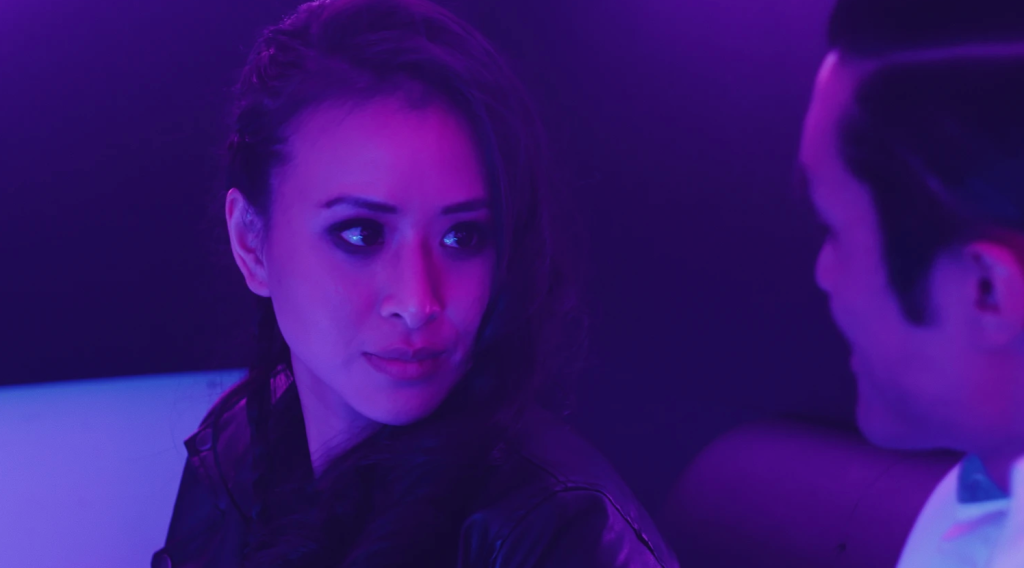
Echo 8 Film Review
By Indigo Willing
Maria Tran is tough, sharp and shines brightly like an assassin’s most treasured weapon in Echo 8, which is her new co-directed action feature film in Australia (with Takashi Hara and written by Elizabeth H Vu). It’s also Australia’s first female-led action movie. Not that Tran’s a rookie. She’s a young Vietnamese Australian filmmaker who travels between here and the US and has been steadily building up her craft as an actor, director, writer, multicultural film festival and projects facilitator and more, while steering the action and martial arts genre full steam ahead onto the big screen. And like many of her contemporary Asian Australians (AA) on the screen and stage, she can more than match her overseas counterparts. Tran is also someone who is driven to ensure that her collaborators’ acting, diverse production skills and martial arts training is fully showcased and is given space. There’s a fire in the belly of the writing, the acting and the production, where cast and crew flourish as individuals yet also uplift their communities and their stories along with them.
The story of Echo 8 introduces us to a beautiful and dangerous woman assassin, codename ECHO 8, who is sent into a house for a mission. But rather than a predictable story of finding easy answers and quickly conquering her nemesis, she must navigate a path riddled with unanswered questions. The narrative is at times light-hearted, and has a cheeky humour, but its heart is tied to deeper themes of family, migrancy, political corruption, strained loyalty, personal secrets, and questions of belonging and connection, all things that endanger an assassin. It is in some ways an allegory to the AA experience where different generations have competing imperatives and for survival, must make it through some haunting situations, but cuts through being pretentious. The actors and stories presented are real despite many having highly trained fighting abilities. We get to spend time through the screen with down to earth people, who convey clear vulnerability from their hardships and warm humour and affection for those close to them.
Tran (Echo 8) is a consistently powerful energy and with her breadth of talent, brings confidence, strength, humour and fun to the role with the type of sass and don’t mess with me aura of women action stars of the 1980s (a golden era with kick ass women who were unstoppable forces). When it comes to the villains, there are some classic bad guys with a strikingly photogenic Takashi Hara as the scheming, and lethal Agent 5, and older actors like Mike Leeder (Z12) and Felino Dolloso (Mercardo) soaking up each scene with their mature looks, hardened composures, and strong commanding stage presence. The young actor Eliza Nguyen (Anna) adds an innocence and sincerity to her performance that is endearing and balancing. Gabrielle Chan (Hanh) yet again proves to be one of the most important AA actors of this era. In Echo 8 she takes her role right into the audience’s hearts with her ability to portray someone carrying unspoken intergenerational trauma, a refugee’s strength, and conflict from choices imposed and with violence always looming. There are also scenes that are nail bitingly suspenseful, sinister, good fun, and showcase great martial arts and choreography, a credit to Tran, Takashi Hara (Agent 5), David Vuong (Delta 1), Michael Quan (Duc) but also actors with smaller roles like the night club thugs Tung Le, Waimun Tam, Chris Sontowski. Bobby Le and Jack Ngu.
The feel and look of Echo 8 is dark and suspenseful, owing to Adrian Castro’s music and sound, a soundtrack by Tina Alcorace (also with a song ft T-Jae and the Rise Academy choir), production design by Tommy Ge, Nancy Trieu and Quyen Chung and the cinematography of Adam McPhilbin, Nancy Triue and Emily Bui. More on the team behind the screen and a multi-talented support cast here
There’s always room for higher production features and various bells and whistles if we expect a high-budget Hollywood experience. But this film wasn’t that kind of creation and in a world saturated with gloss over guts and celebrities over authenticity, it’s a refreshing experience. Get on board and enjoy the journey.



2022
Since 2020 pandemic the AAFFN has been in rest, re-charge, and reflection mode. Same time, our passion for elevating and sharing news about Asian Australian creatives, activists, researchers and other change-makers is a flame that has never stopped burning brightly. We have been regularly sharing news about Asian Australian, Indigenous and PoC change-makers over on our Twitter at @aaffn so check it out. So much to celebrate in the Asian diaspora as well!
Here’s some highlights about a few happenings in the Asian diaspora:
OK so she’s more Asian American, but Malaysian born actor Michell Yeoh rightly got all the recognition she has long deserved including TIME Icon of the year. 2022 was her year! Everything, Everywhere, All at Once also swept up five awards at the Golden Globes! The acceptance speeches by Michelle Yeoh and Ke Huy Quan were also show stoppers (literally).
OzAsia Festival Artistic Director Annette Shun Wah was listed as an A22 Champion, alongside In Other Words speakers Jason Om, Maria Tran, and Senator Fatima Payman.
In Other Words Program Curator Jennifer Wong was listed as an AA122 Honouree for her work in the media (arts and entertainment) industry.
The AA122 List honours the 122 Asian Australians who have had the most impact on Australian culture, society, and institutions over the past year.”
We were delighted to see AAFFN’s Dr Indigo Willing included in the list for sport and academia (work includes equity, diversity, and inclusion team research for Skate Australia, plus the Pushing Against Racism 2022 team project We All Skate QLD and the Adoptees Rolling Program in 2022).
Rachael Jacobs lauched the Deep Harmony anti-racism program in NSW schools taught through drama and dance.
Maria Tran is a powerhouse and whirlwind of activity and 2022 was no exception. Along with empowering the Vietnamee and Asian Australian community with workshops, film festivals and more, she also went into production for Echo 8 which debutes in 2023. Read more about what she’s been up to here
Corrie Chen’s Gold Mountain (launched 2021) received numerous accolades in 2022 including the Asian Academy Create Award, an Australian Directors Guild Award and many others.
Joy Hopwood’s film Get a Life screened nationally and was picked up by major broadcasters in Australia and overseas including Channel 9 and Amazon Prime.
AAFFN’s 10th anniversary in 2021
Hard to believe it’s coming up to the AAFFN’s 10th anniversary this November, 2021. To celebrate have a look with us and spot the familiar faces in this AAFFN Launch Video directed in 2011 by Maria Tran and produced by AAFFN co-founder Dr Indigo Willing with support from Dr Tseen Khoo from AASRN.
We are super stoked have featured actor Chris Pang before he was cast in Crazy Rich Asians, plus screen presenter, martial artist and actor Andy Trieu who, with his signature charm and comedy, offered some very sound advice. Also see more uplifting and positive insights in the video offered many other actors, directors and screen professionals who have achieved many ‘firsts’ and opened many doors for other Asian Australians creatives and academis. Keep supporting us please at Asian Australian Film Forum & Network (AAFFN) and especially on twitter @AAFFN where we continue to cover community achievements and activities regularly.
Video summary: The creative visions, experiences, advice and ‘real talk’ about why it’s important to have Asian Australians active on and behind the screen: http://vimeo.com/33102053
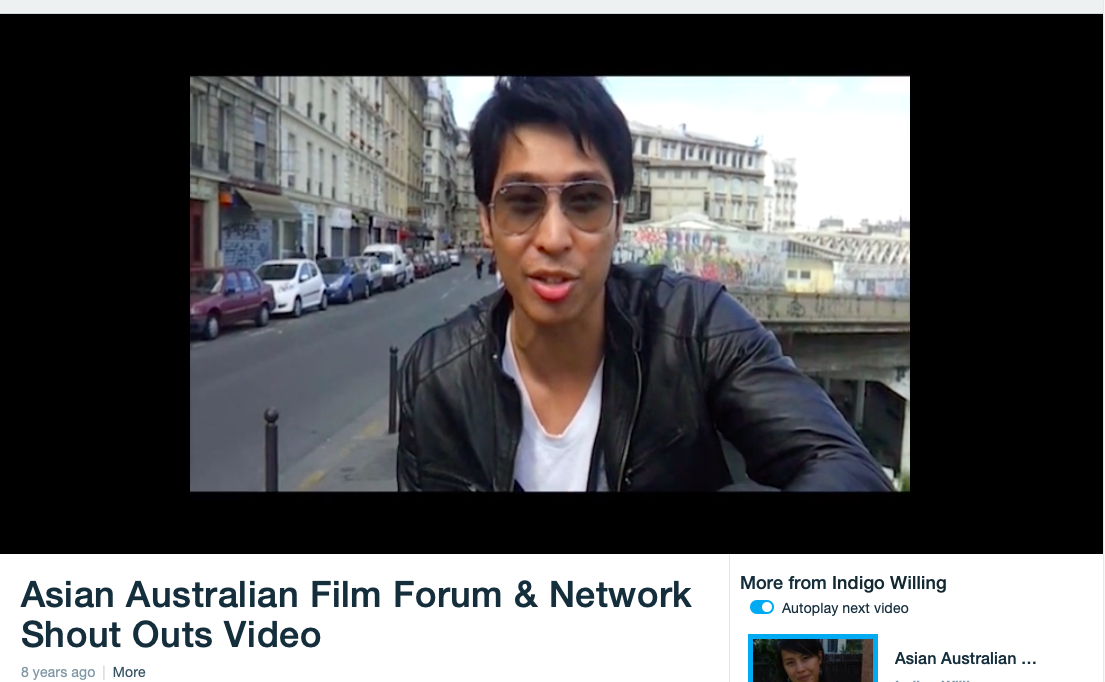
2020 – AAFFN supports Black Lives Matter
Black Lives Matter in the USA, globally and also locally and it is important to identify and dismantle systemic racism and enduring forms of colonialism at all levels of society and big institutions.
We have been regularly re-tweeting and sharing petitions, fundraisers and protests on our Twitter @aaffn to direct Asian Australians in our community to listen to and support First Nations communities, activists, health professionals, psychologists and academics sharing about related issues. We also wish to express gratitude to the many individuals and collectives who are non-Asians who have been behind us during the corona virus racism and speaking up for refugees and more, including from First Nations, Latinx and African Australian leaders and community groups.
We are thankful and dedicated to anti-racism, pushing for justice and offering solidarity and support, while also acknowledging we are on unceded Aboriginal Land. We may not always get it right but that’s no excuse to not do the work, listen, learn, and then do more work.
We also urge our community to follow First Nations media, journalists and writers to educate and communicate support to end systemic racism at all levels. The below is just a glimpse and in no way a comprehensive list:
ABC’s Bridget Brennan. on ABC’s The Insiders here
Associate Professor Chelsea Watego on The Drum here
Meyne Wyatt monologue from his play City of Gold on ABC’s QandA here
Professor Sandy O’Sullivan has also provided a comprehensive list of articles written by Indigenous experts from various professions and academic fields on their Twitter account here and they then added more on FB here
Nationwide news sources (there are many more):
End Black Deaths in Custody – see Black Deaths Inside Database and Story in the Guardian
Please support:
In My Blood it Runs out today by Maya Newell
Asian Australian Maya Newell has directed a documentary feating the story of Dujuan Hoosan from Arrernte/Garrwa First Nations. Read more below:-
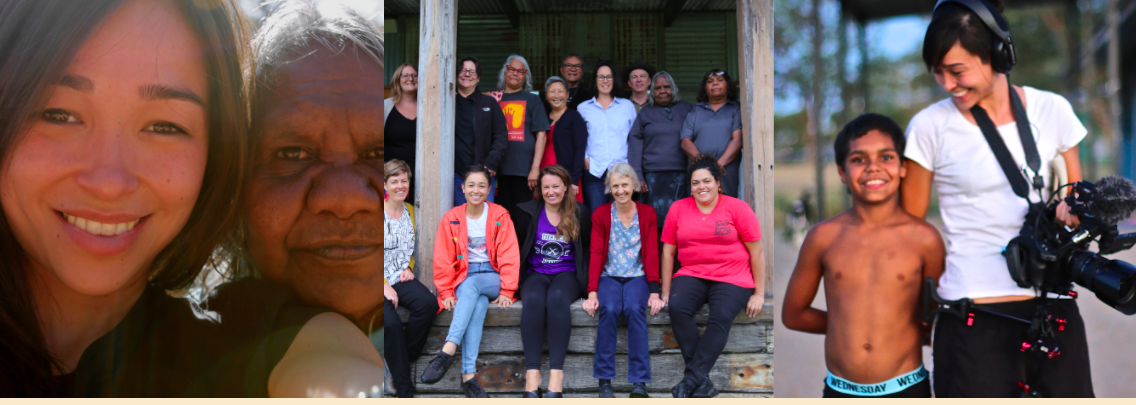
Synopsis:
Ten-year-old Dujuan is a child-healer, a good hunter and speaks three languages. As he shares his wisdom of history and the complex world around him we see his spark and intelligence. Yet Dujuan is ‘failing’ in school and facing increasing scrutiny from welfare and the police. As he travels perilously close to incarceration, his family fight to give him a strong Arrernte education alongside his western education lest he becomes another statistic. We walk with him as he grapples with these pressures, shares his truths and somewhere in-between finds space to dream, imagine and hope for his future self.
Team:
Maya Newell
Director. Producer. DOP. Editor.
Maya is an Australian filmmaker with a focus on social impact documentary. In My Blood It Runs was selected for Good Pitch Australia 2016, the Sundance Documentary Fund and Sundance Skywalker Music and Sound Design Labs and is due for release in 2019. She has directed award-winning short documentaries, Two (AFI Docs, Slamdance, Winner AIDC emerging talent) and Growing Up Gayby (ABC TV) and her feature documentary Gayby Baby(2015). Gayby Baby was selected for GoodPitch² Australia 2014, premiered at Hot Docs, screened at London BFI, Doc Leipzig, Doc NYC, is on Netflix US and reached No. 1 on iTunes doc charts during it’s UK release. In Australia, the film famously caused a national stir when it was banned by the Australian State Government and is acknowledged as significant in the fight for Marriage Equality and Adoption Equality in Australia.
Felicity Hayes
Executive Producer / Senior Traditional Owner of Mparntwe (Alice Springs)
Felicity Hayes is an Arrernte Elder, educator and the recognised Traditional Owner of Mparntwe/Alice Springs. Felicity has campaigned for decades for social justice for her people, the right to live on her country and the right for Arrernte families to teach their children. Felicity has been instrumental working within the formal education system, sharing and teaching Arrernte language and culture. Felicity is one of the grandmothers who form the backbone of Children’s Ground in central Australia, providing leadership and direction on the learning, wellbeing and development of children at her home, Irrkerlantye (Whitegate Town Camp).
More about the team of First Nations and non-Indigenous producers/staff at:
https://inmyblooditruns.com/about/
Screenings:
https://inmyblooditruns.com/screenings/
Follow on Twitter:
out this month
Keeping it Fresh – 2019 See our Regular Updates on Facebook and meet ups with the AASRN
KEEPING IT SOCIAL (ON SOCIAL MEDIA)
HELLO WORLD!!!!!!!!! (cue Saddle Club sountrack)…
Did you know since 2017 we began to move a lot of our conversations and content posts over to Social Media including our AAFFN Community FB Page (lots of exciting news from the AusAsian scene – updated weekly) and for public/members who want to circulate their own news of events, auditions, crew recruitment and so on join our AAFFN FB Group. We still also share the occasional cheeky tweet on Twitter at @aaffn
For events we encourage creatives to connect through our friends events at the Asian Australian Studies and Research Network (AASRN). They throw regular casual meet ups across various cities (e.g. Sydney, Melbourne and soon Brisbane and Perth) plus more formal events.
KEEPING THE CONVERSATIONS GOING
The AASRN are having their next Asian Australian Identities 7 Conference in November 2019 – see program here. The program from the 2017 AAI6 Conference with Paper abstracts by two of AAFFN’s Co-Conveners, Dr Sukhmani Khorana and Dr Indigo Willing OAM can be found here.
Hope we see you there or on the ‘gram, FB and Twitter!
Cheers from the AAFFN Co-Conveners
Asian Australian filmmakers story SBS
Story on SBS about Asian Australian filmmakers pushing for more representation.
https://www.sbs.com.au/news/asian-australian-filmmakers-push-for-greater-representation-in-hollywood




